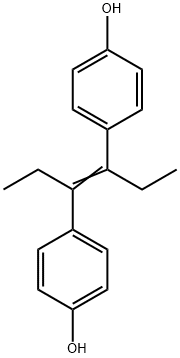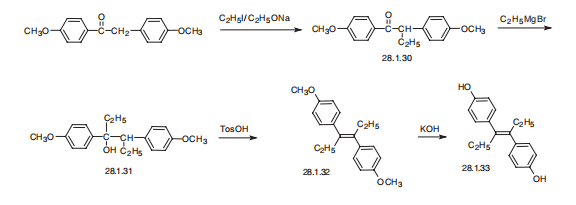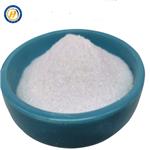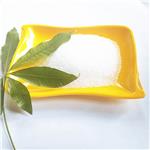
3,4-Bis(4′-hydroxyphenyl)-3-hexene
- Product Name3,4-Bis(4′-hydroxyphenyl)-3-hexene
- CAS6898-97-1
- CBNumberCB0503501
- MFC18H20O2
- MW268.35
- EINECS678-392-3
- MDL NumberMFCD00002373
- MOL File6898-97-1.mol
Chemical Properties
| Melting point | 170-172 °C(lit.) |
| Boiling point | 407.1±25.0 °C(Predicted) |
| Density | 1.107±0.06 g/cm3(Predicted) |
| solubility | soluble in Methanol |
| form | powder to crystal |
| pka | 9.27±0.15(Predicted) |
| color | White to Almost white |
| Merck | 14,3129 |
| InChIKey | RGLYKWWBQGJZGM-ISLYRVAYSA-N |
| CAS DataBase Reference | 6898-97-1 |
| UNSPSC Code | 12352100 |
| NACRES | NA.22 |
Safety
| Symbol(GHS) |
  
|
|||||||||
| Signal word | Danger | |||||||||
| Hazard statements | H315-H319-H335-H350-H360FD-H410 | |||||||||
| Precautionary statements | P202-P261-P273-P302+P352-P305+P351+P338-P308+P313 | |||||||||
| Hazard Codes | T,N | |||||||||
| Risk Statements | 45-61-36/37/38-51/53 | |||||||||
| Safety Statements | 53-36/37/39-45-60-61 | |||||||||
| RIDADR | UN 3077 9/PG 3 | |||||||||
| WGK Germany | 3 | |||||||||
| RTECS | WJ5600000 | |||||||||
| HazardClass | 9 | |||||||||
| PackingGroup | III | |||||||||
| HS Code | 29072990 | |||||||||
| NFPA 704: |
|



